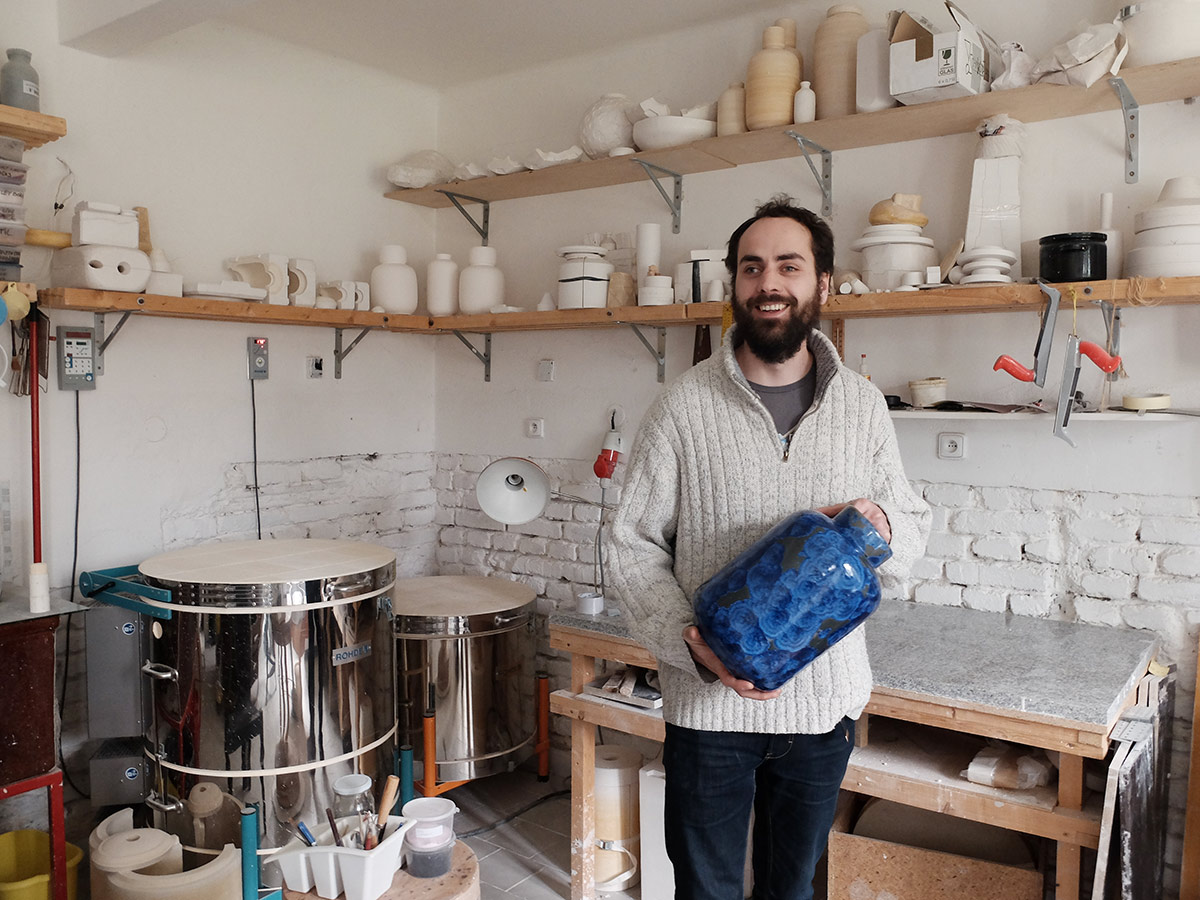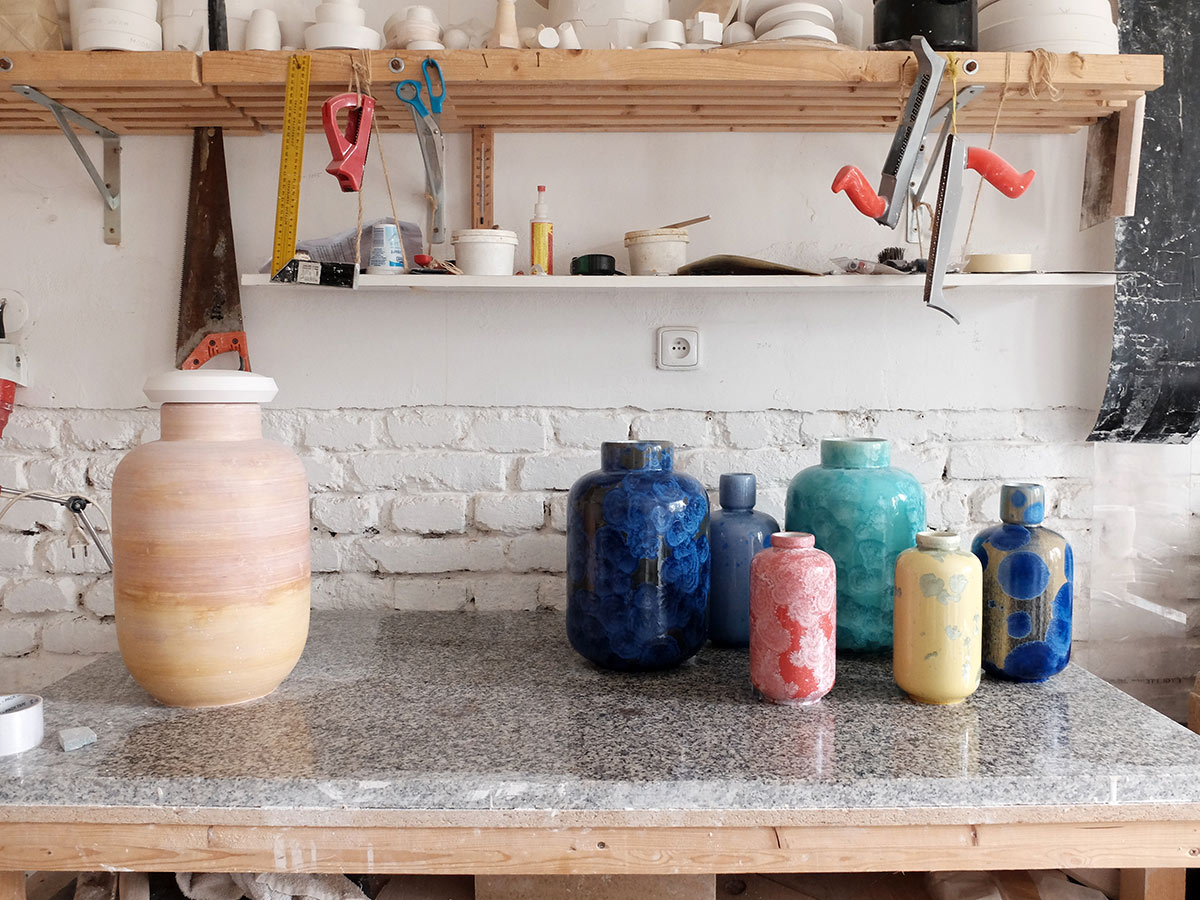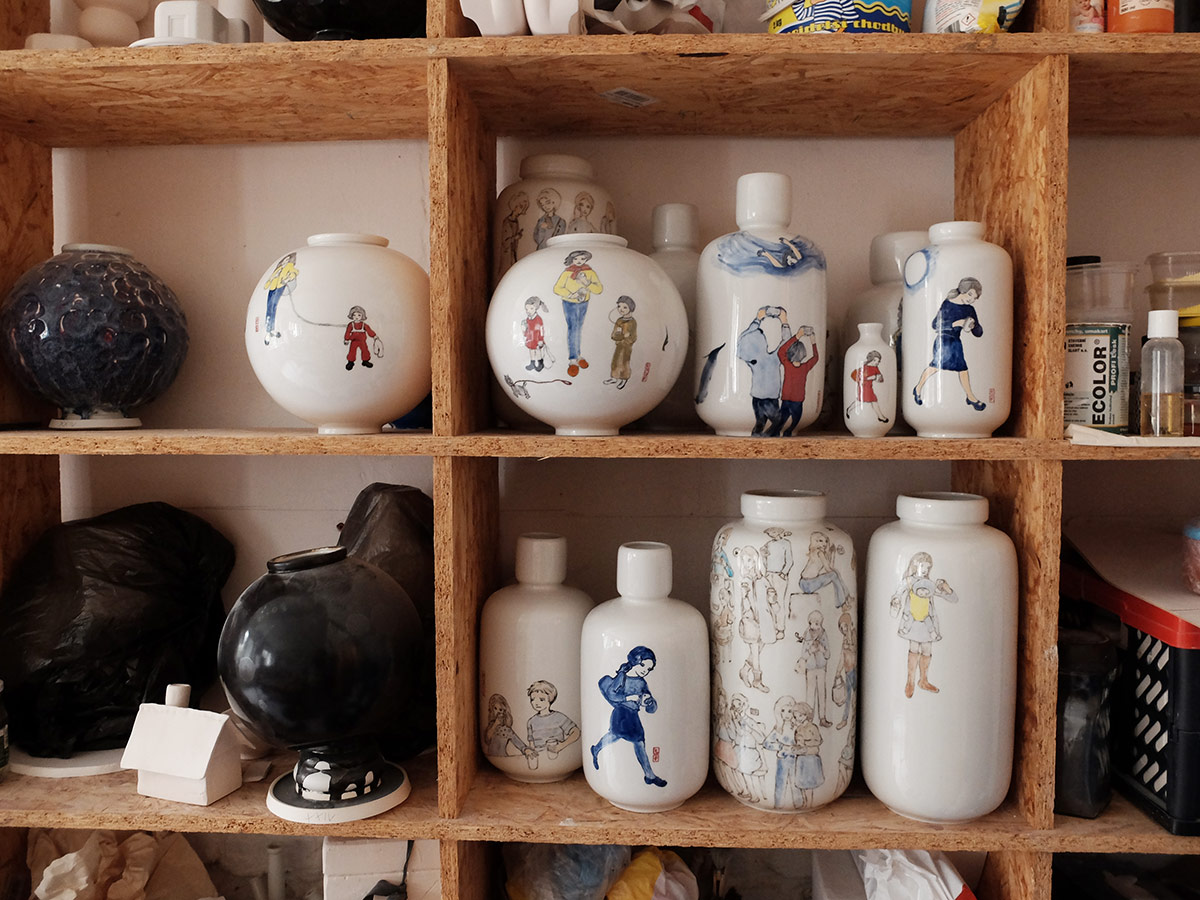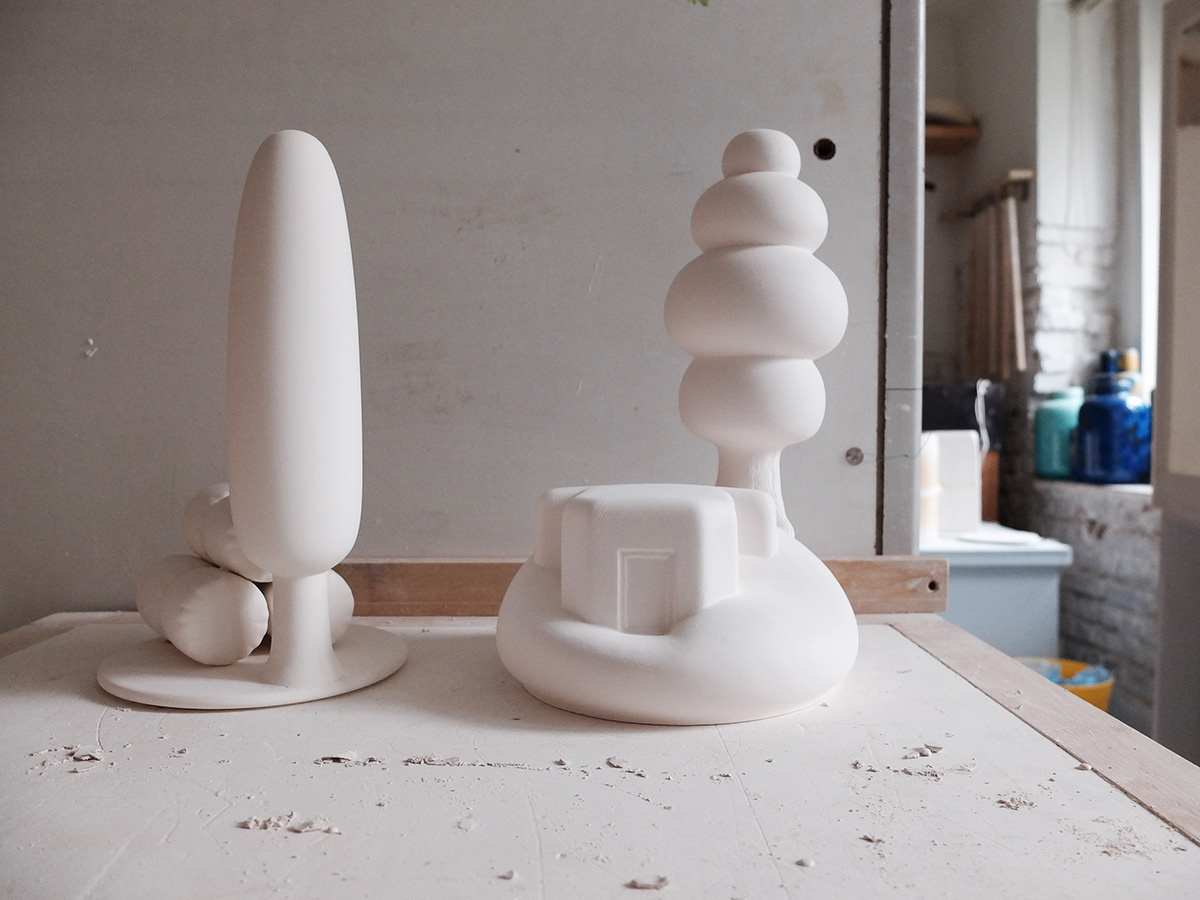Studio Visit: Milan Pekař
The Czech porcelain artist explains how his simple vessels show off the unique qualities of his custom made glazes

Czech designer Milan Pekař has created beautiful objects for many years, working with a humorist style, designing porcelain ship-shaped lamps and vases that look like mini factories. Three years ago, he became an assistant of the porcelain studio at Prague Academy of Arts and Design, led by fellow Czech designer Maxim Velčovský. But Pekař also works on various personal projects—always experimenting with and exploring his craft—and last year he presented whole new collection of crystalline vases.

Crystal glazes take me on a fascinating adventure. There are endless in variations of glazes that one can produce.
For the project, Pekař decided to experiment with different temperatures, oxides and applications techniques. “After many months of test firing various types of glazes during the project, I became very interested in the crystal glazes. I have put in many hours for the research and developed my own glazes. It took many and many disasters, testing, remixing, experimenting, to achieve the results that I wanted. Crystal glazes take me on a fascinating adventure. There are endless in variations of glazes that one can produce,” Pekař tells CH.

To highlight the qualities of the glazes, Pekař designed a series of simple vases to show the effects in the most effective and striking way. The result is a collection of very different vases, each entirely unique with its own glaze made by mixing several bright hues. The collection was nominated for a Czech Grand Design Award and one of the pieces was purchased for the permanent collection of Museum of Arts and Crafts in Dresden.

Ever-evolving and creating, Pekař embarked on yet another project which is inspired by traditional Czech landscape. Called “Czech Landmark,” the collection of porcelain objects interprets legendary 1930s Czech fortresses that were built as a defense against Nazi Germany. “They have never been in practical use for what they were actually built for and with a time, they became part of Czech landscape,” Pekařtells CH about the structures. “Mostly these fortresses were built on top of mountains or in the middle of fields,” he says. This concept reflects the sentiment that practicality and functionality—even for the most grim reasons—and creative inspiration, beauty and charm don’t have to be mutually exclusive.
Images by Adam Stech
















